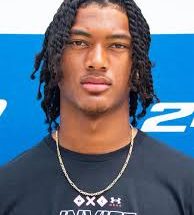The air in the arena is always different on opening night. It’s a palpable mixture of hope, anxiety, and the raw, unfiltered energy of a new beginning. For the San Antonio Spurs and their legion of fans, that hope is crystallized in the towering, generational frame of Victor Wembanyama, entering his second year with the weight of the league’s future on his shoulders. But on the opposite bench, a different kind of seismic shift is reportedly taking place, one so audacious it threatens to redefine not just a team, but the very archetype of an NBA player. According to ESPN’s Tim McMahon, the Utah Jazz—or whichever team holds his draft rights come opening night—are poised to not only play Cooper Flagg, but to start him at point guard.
Let that sink in. Cooper Flagg, the 6’9″ phenom from Maine, whose high school and grassroots career was built upon a foundation of defensive terror, relentless rebounding, and a scoring prowess that seemed to emanate from everywhere on the court, is being anointed as the primary conductor of an NBA offense from day one. This isn’t merely a rookie being thrown into the fire; this is a fundamental re-imagining of his basketball identity against the highest level of competition imaginable. The matchup itself becomes a narrative colossus: Wembanyama, the 7’4″ alien center, the defensive ender of worlds, versus Flagg, the jumbo-sized point guard, the offensive initiator who looks like a power forward.
The immediate reaction in the basketball world is a blend of exhilaration and profound skepticism. The purists clutch their pearls. Can a teenager, even one as preternaturally gifted as Flagg, truly handle the responsibilities of the point against the league’s predatory, veteran guards? The pick-and-roll dance, the chess match of coverages, the need for split-second decision-making while navigating traps and double-teams—this is a doctoral program in basketball theory, and Flagg would be enrolling without taking the prerequisite courses. The physicality is another concern. While strong for his age, can he withstand the nightly punishment from smaller, stronger, and low-to-the-ground bulldogs who will test his handle and his composure with 94 feet of pressure?
Yet, to dismiss this move as mere desperation or reckless experimentation is to misunderstand the trajectory of modern basketball and the unique nature of Cooper Flagg’s genius. The NBA is no longer a league of rigid positions but of overarching competencies. We celebrate Nikola Jokic, a center, as the game’s premier passer. We marvel at LeBron James, for two decades, operating as a 6’9″ point guard who could also guard centers. The blueprint for the “positionless” playmaker exists, and Flagg is perhaps the most pristine prospect to ever arrive with the potential to fill it completely.
His supposed assignment against the Spurs isn’t just a test; it’s a statement of intent. By placing the ball in Flagg’s hands from the opening tip, the coaching staff is declaring that his highest and best use is not as a finisher, but as a creator. It is a bet on his basketball IQ, which has been described as preternatural. Flagg’s game has never been about sheer athleticism alone; it’s been defined by an almost psychic sense of timing, of space, of anticipation. He sees passing lanes before they open, he understands defensive rotations as they’re happening, and he possesses the kind of visceral, unselfish joy in making the right play that defines all great floor generals.
Imagine the tactical nightmares this presents for the Spurs, even with a defender of Wembanyama’s caliber. When Flagg brings the ball up the court, who does Gregg Popovich assign to guard him? Put a traditional point guard on him, and Flagg simply elevates for a jump shot over a helpless, smaller defender. Switch a bigger wing onto him, and you risk sacrificing the footspeed to contain his first step. This is the essence of the mismatch economy that dominates today’s NBA. Flagg, as the primary ball-handler, forces the defense into uncomfortable concessions before a play is even called.


